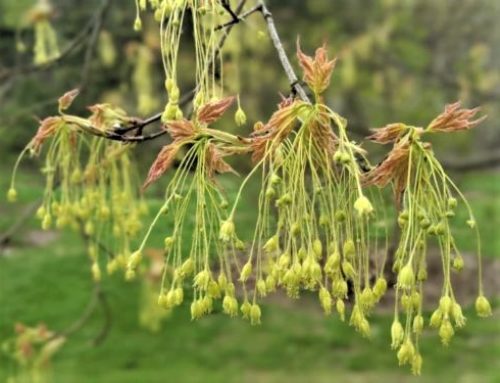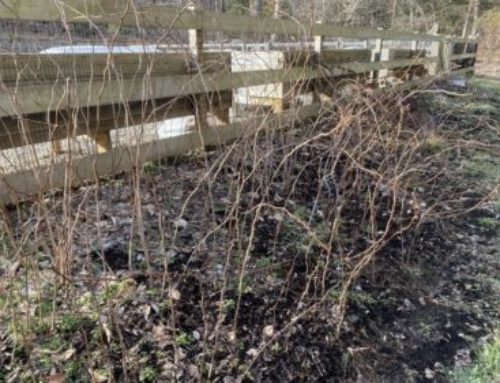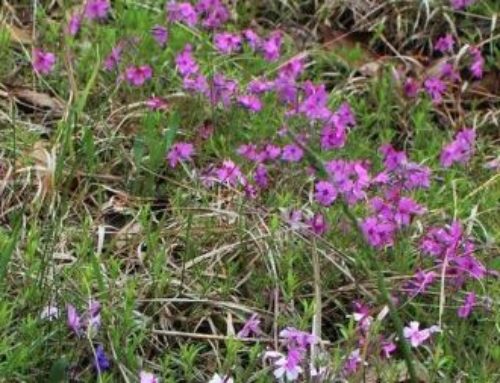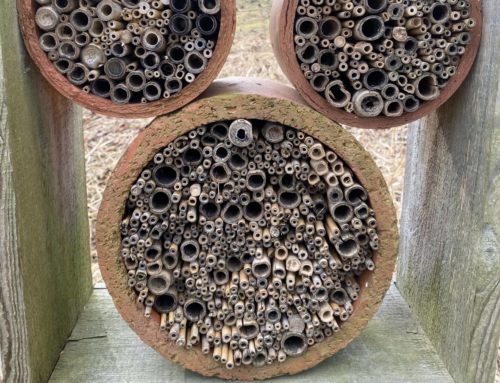“When life hands you dirt, plant seeds.” – Matshona Dhliwayo
Now more than ever seems like a good time to have a vegetable garden, even if you have never had one before. The reason I say this is three-fold: in this time of COVID-19 we have more time at home to start and look after our gardens, we need to eat healthy and get exercise, and we want to be prepared for the possibility of the interruption of the food supply chain.
So as this year begins, let us turn over a new leaf by preparing for our spring and summer vegetable gardens. It need not be daunting! If we take one step at a time, before we know it, we will have lush veggies in our garden ready for harvest.
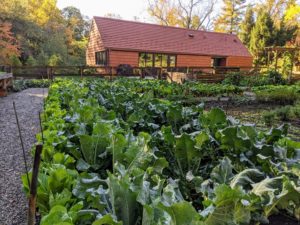
First things first — you will need to decide which vegetables you want to grow in your garden. You will want to pick vegetables that fit with the space you have. Some plants fit well in a small area, but others need more room to stretch out. Vegetables that grow on a vine take up more space, so you will either need to give them more ground space or grow them vertically (poles or a trellis).
Not sure which ones to grow? You can either pick vegetables you really like to eat or pick from the 14 most popular vegetables of home gardeners. These are popular because they are tried and true; they are relatively easy to care for, deliver tasty results, and are top producing vegetables. The 14 most popular vegetables to grow are: beans (pole or bush), broccoli, cabbage, carrots, cauliflower, cucumbers, green beans, leafy greens (kale, collard greens, microgreens, spinach, arugula, Swiss chard), lettuce, peppers, peas, summer squash, zucchini, sweet corn, tomatoes and winter squash.
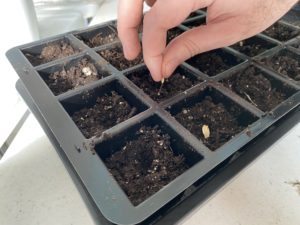
The next decision to be made is whether you would like to have modern hybrids or heirloom varieties for your garden. Heirloom is essentially the result of seed saving. In other words, the plants or seeds you buy are handed down from one generation to the next. Heirloom vegetables deliver diverse colors, bright flavors, rich nutrition and fascinating history. They usually cost less than hybrid vegetables, and you can save your own seeds from year to year. So why not try an heirloom vegetable or two in your garden this year? You can also include a new variety of a vegetable, such as “Purple Sun Carrot”, a brand new carrot cultivar for 2021.
Now on to the task of determining which vegetables should be direct seeded (seed goes directly in the soil outside) and which should be transplanted (seedlings you have grown indoors or plants you buy). Growing vegetables from seeds may not be practical for long-season plants like peppers. They need to be started indoors in February to ensure that they have time to mature and set fruit in mid to late summer. Not everyone has the space inside their house to start seeds this early, but if you have a warm, sunny spot and want to try your hand at starting tomatoes and peppers, you definitely should! It’s a fun and exciting way to pass the winter months, and very rewarding to harvest produce from plants you started yourself. Otherwise, many gardeners will purchase seedlings of those long season vegetables to plant out in May.
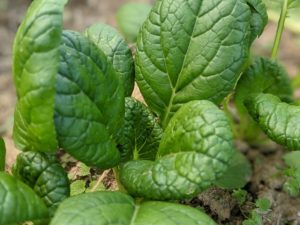
Spring and summer vegetables that should be direct seeded (planted in the soil outside) are beans, beets, bok choi, carrots, corn, cucumbers, lettuce, okra, parsnips, peas, pumpkins, radishes, rutabaga, scallions, spinach, squash, Swiss chard, turnips and watermelon. These are crops that are either speedy growers (like your leafy spring greens), root crops that don’t need to set fruit (just need to establish the edible root like carrots and beets), or late season fruit crops (like watermelon).
Vegetables you may want to either grow your own seedlings indoors or buy from an area grower are broccoli, Brussel sprouts, cabbage, cauliflower, celery, collard greens, eggplant, endive, escarole, kohlrabi, leeks, peppers and tomatoes. Those plants need a little more time to get going, and starting them indoors or buying seedlings that are already starting will ensure that they have time in your garden to produce fruit. For more information see the PA extension planting and transplanting guide.
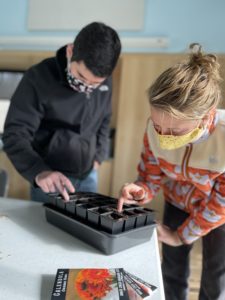
When it comes to starting our seeds indoors, it is helpful to know or remember a few things:
- Purchase your seeds from a trusted source, like Johnny’s Selected Seeds, Baker Creek Heirloom Seed Co. or Rohrer Seeds in Lancaster, PA.
- Pot with seed starting mix. It makes for ideal conditions for sprouting, minimizes disease, and provides a good balance of drainage and water holding capacity. Do not use soil from your outdoor garden to start seeds indoors. Make sure your containers have drainage holes in the bottom. You can use empty yogurt containers, plastic six-packs or flats, or special seed sprouting trays you purchase.
- Plant seeds at the proper depth (check the seed packet for depth).
- Plant more seeds than you will need for your garden, because all may not germinate.
- After sowing, put the container/tray in a warm location (near a radiator or on top of the refrigerator). Check pots daily for signs of growth.
- Keep seed-starting mix moist but not saturated. Seed roots need both air and water.
- As soon as seedlings emerge, place pots in bright location (sunny window or supplemental fluorescent lights suspended an inch or two over the tops of the plants).
- Put in a cool temperature room. Seedlings are sturdier and stockier if grown in a room in the high 60s. Higher temperatures tend to make seedlings leggy and weak (as does insufficient light).
- Begin fertilizing weekly. Use half-strength fertilizer once seedlings have one to two sets of leaves. Organic fertilizers are a good choice.
- Thin seedlings once they have two sets of leaves. This may be a good time for one seedling per pot. Choose the healthiest, strongest-looking seedlings to keep. Snip the other seedlings off at the soil line and discard them (in your composter, if you have one).
All that remains now is to get started, and before you know it you’ll be harvesting produce! For more information see extension.psu.edu/vegetable planting and transplanting guide.
I leave you with this parting thought, “A seed neither fears light nor darkness, but uses both to grow.” – Matshona Dhliwayo
Happy growing!


